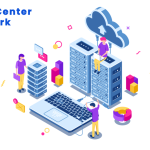The modern business landscape relies heavily on technology, and an efficient IT service desk is essential for keeping an organization’s operations running smoothly. Unfortunately, IT service desks can often become overwhelmed with requests and unable to deliver the quality of service needed. It can lead to frustrated end-users, lost productivity, and decreased customer satisfaction. Fortunately, there are several steps organizations can take to help their IT service desks get back on track.
Related article: Here’s why ITSM is a big deal in the manufacturing world
Before moving on to addressing problems when your IT desk is struggling, you should pay attention to several factors, as they play a significant role in understanding where your platform is and the extent to which it is struggling.
Be realistic about the situation.
When your IT service desk is struggling, it is essential to be realistic about the situation. It is important to understand the root cause of the problem and come up with a plan of action to address it. It is crucial to assess the resources and time available and develop a realistic timeline for resolving the issue. It is also essential to communicate with the team and stakeholders involved to ensure that everyone is on the same page and understands what needs to be done. Finally, consider measuring the progress and success of the plan and make adjustments as needed. By being realistic and taking the time to create a plan, the IT service desk can work together to ensure that the problem is addressed and resolved quickly and efficiently.
Analyse data
When using data to understand the issues and root causes when an IT Service desk is struggling, you would do well to look at the data as a whole, i.e., looking at all of the data points, including customer feedback, customer support requests, software usage metrics, user activity logs, and any other relevant data points. Looking at all the data points can help identify any trends or patterns in the data that could be causing the issues. For example, the customer feedback may indicate that there is a lack of communication from the IT Service desk or that customers are having difficulty navigating the user interface.
Software usage metrics may indicate that certain features are being underutilized or have not been put into use. User activity logs may indicate that there is a high volume of customer inquiries or requests that are not being addressed in a timely manner. By understanding the underlying root causes of the issues, the IT Service desk can take the necessary steps to manage them. It can include improving customer service, providing better training and support, or making changes to the user interface to make it easier to navigate. Additionally, the team can use the data to develop strategies and procedures to ensure that customer inquiries and requests are addressed promptly.
Focus on the customer and their outcomes.
When it comes to IT Service desk struggles, customers should be the top priority for any IT Service desk, as they are the ones who will ultimately benefit from the services you provide. Customers should be given the best service experience possible and should be kept informed of any updates or changes that may affect their service.
When an IT Service desk is struggling, it is vital to identify the root cause and devise a plan to address it. It could involve taking a closer look at customer feedback, assessing the current process and procedures, and evaluating the tools and resources being used. Once the root cause is identified, the IT Service desk should be able to improve the customer experience. It is also essential to ensure that the IT Service desk uses the right technology to support customers.
Technology should be used to streamline processes and make them more efficient, and it should also be used to enhance customer experiences. This could include using automation to respond quickly to customer inquiries, providing self-service options, and using analytics to understand customer needs better.
Finally, ensuring that the IT Service desk is providing timely and accurate responses to customer inquiries is vital. It means giving regular updates on the status of customer inquiries, setting realistic response times for customer inquiries, and ensuring that customers are given the best possible customer service experience.
By focusing on the customer and their outcomes, the IT Service desk will be able to provide the best possible service to customers and improve their overall satisfaction.
Seven steps to take to handle your IT Service Desk struggles
While companies try to address their issues with existing IT Service Desk, there are a few key steps you can take to overcome the stumbling blocks in customer satisfaction.
Assess the problem
The first step is to evaluate the current situation. Identify any issues that are causing the IT service desk to struggle, such as a lack of resources, inefficient processes, or an inadequate knowledge base. Once the problem has been identified, you can start to develop a plan to address it.

Reorganize the Service Desk
If the IT Service Desk is having difficulty managing all of its requests, it may be time to reorganize. Consider restructuring the service desk to better align with the organization’s goals and objectives. This may include changing the number of staff, establishing new processes, or providing additional training.
Automate processes
Automating specific processes can help reduce the workload for the IT service desk. Automating routine tasks, such as password resets, can free up staff to focus on more complex requests.
Invest in self-service solutions
Implementing a self-service solution can help reduce the number of requests the service desk must manage. This can include a knowledge base, online FAQs, or an automated ticketing system.
Improve communication
Improving communication between the service desk and end-users can help reduce confusion and ensure requests are handled quickly and efficiently. Consider setting up a customer portal where end-users can submit requests and track their progress.
Provide training
Regular training to service desk staff can help ensure they have the skills and knowledge needed to provide quality service. Staff should be encouraged to stay up-to-date on the latest technology and trends.
Monitor performance
Regularly tracking and analyzing the performance of the IT service desk helps identify areas where improvements can be made. Consider setting up performance metrics, such as response times and customer satisfaction ratings, to ensure the service desk is meeting its goals.
By following these steps, organizations can ensure their IT service desk is providing the best possible service and that end-users are getting the support they need. Organizations can improve productivity and customer satisfaction with a well-organized and efficient service desk. While there are several reasons why your Service Desk may still be struggling to achieve optimal ROI, there is no reason why these seven steps can’t help overcome the challenges and meet, if not exceed, your customer expectations.
Related Article: Service Desk Best Practices You Should Know in 2023 | Infraon
Final note
The IT service desk team is essential for the success of any organization, and it is crucial to ensure that they have the right tools and procedures in place to support their work. By implementing the key steps discussed in this article—including understanding customer needs and expectations, having suitable support systems, and establishing transparent communication processes—organizations can ensure that their IT service desk team is well-prepared to handle any issues they may encounter. While the work of the IT service desk can be difficult, having the right strategies and resources in place can help to make their job easier and more efficient.























